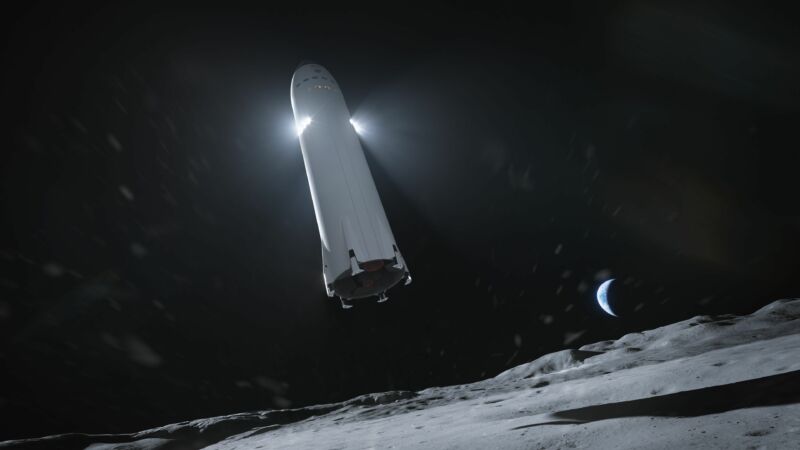At long last, the glorious future we were promised in space is on the way

Enlarge / In this illustration, SpaceX's Starship vehicle is seen landing on the Moon. (credit: NASA)
Last Friday, NASA awarded a $3.4 billion contract to a team led by Blue Origin for the design and construction of a second Human Landing System to fly astronauts down to the Moon.
The announcement capped a furious two-year lobbying campaign by Blue Origin owner Jeff Bezos to obtain a coveted piece of NASA's Artemis program. NASA also notched a big win, gaining the competition with SpaceX it sought for landing services. But there is a more profound takeaway from this.
After losing the initial lander contract to SpaceX two years ago, Blue Origin did not just bid a lower price this time around. Instead, it radically transformed the means by which it would put humans on the Moon. The Blue Moon lander is now completely reusable; it will remain in lunar orbit, going up and down to the surface. It will be serviced by a transport vehicle that will be fueled in low-Earth orbit and then deliver propellant to the Moon. This transporter, in turn, will be refilled by multiple launches of the reusable New Glenn rocket.